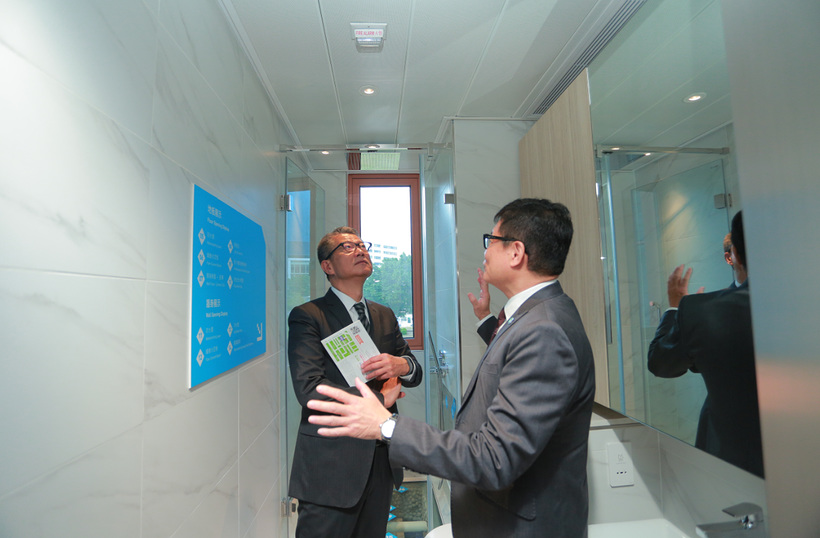Blog
Modular Integrated Construction
Located in Kowloon Bay, the Zero Carbon Building (ZCB) established by the Construction Industry Council (CIC) serves to showcase and promote smart city technologies and low carbon living. Recently, ZCB welcomed its new member – the Modular Integrated Construction Display Center (MiC Display Center).
The MiC Display Center is a two-story structure constructed and installed using Modular Integrated Construction (MiC) method. A total of 10 steel building modules form the showroom of 3,000 square feet to demonstrate how the application of MiC can speed up the construction of residential flat, hostel, elderly home and even hotel room. The residential show flats in MiC Display Center includes one 1-bedroom unit and one 3-bedroom unit, both designed and modelled on typical residential flats of Hong Kong.
Applying prefabrication in building construction may not be new to many of us. The unique feature of MiC is that the related prefabricated modules are not only completed with building structure and internal partitioning, but are fully furnished with interior fitting out, even with kitchen cabinets, oven, bed frame, mattress, curtains and TV wall mount all in place. The completed modules can then be delivered to the building site for direct installation.
These construction processes seem as simple as block building. In fact, most conventional in-site construction activities of building structures and interior fitting out could be completed in off-site manufacturing facilities. Connection between modules and installation of plumbing and electrical wiring are completed before delivery of the modules. Good planning at the design stage allows completed units to be transported to the building site for immediate and quick installation.
 |
Interior fitting out usually takes place after the completion of the building structural frame in conventional construction. This approach is labour intensive, time consuming and generates more substantial construction wastage. By adopting MiC, design and production of prefabricated modules can proceed in parallel in manufacturing facilities, while the foundation construction works is in progress on site. The prefabricated modules would then be delivered to the construction site for direct installation, which can shorten the construction period by some 30% and in turn help alleviate labour shortage, improve working environment, enhance site safety and quality control.
MiC is a mature technology widely adopted for the construction of hostels, hospitals, elderly homes and residential flats in the U.K., the United States, Germany, Singapore, etc. For example, a residential flat of some 40 storeys is being constructed in Singapore using MiC. A 5-star hotel in Tibet was also built by using MiC. Hospital projects in Europe have achieved lower construction cost by adopting MiC.
In Hong Kong, the Government has been taking the lead in piloting MiC in public works projects. These pilot projects include the Disciplined Services Quarters for the Fire Services Department at Pak Shing Kok and the Wong Chuk Hang student residences project of the University of Hong Kong. The Housing Authority is also planning to adopt MiC for elderly home project in Shatin. In the last Budget, I injected $1 billion to set up the Construction Innovation and Technology Fund (CITF) to support innovation in construction technology, and MiC is one of the targeted areas. The CITF is operated on a co-fund basis, with Government grant capped at 70% of the project costs involved. The funding covers the hiring of specialist consultant, purchase or rental of construction related equipment, and even purchase of MiC modules.
While the development of Hong Kong is constrained by land shortage, the use of innovation and technology can transform limitations into opportunities, and promote the upgrading of traditional industries in Hong Kong.
January 13, 2019